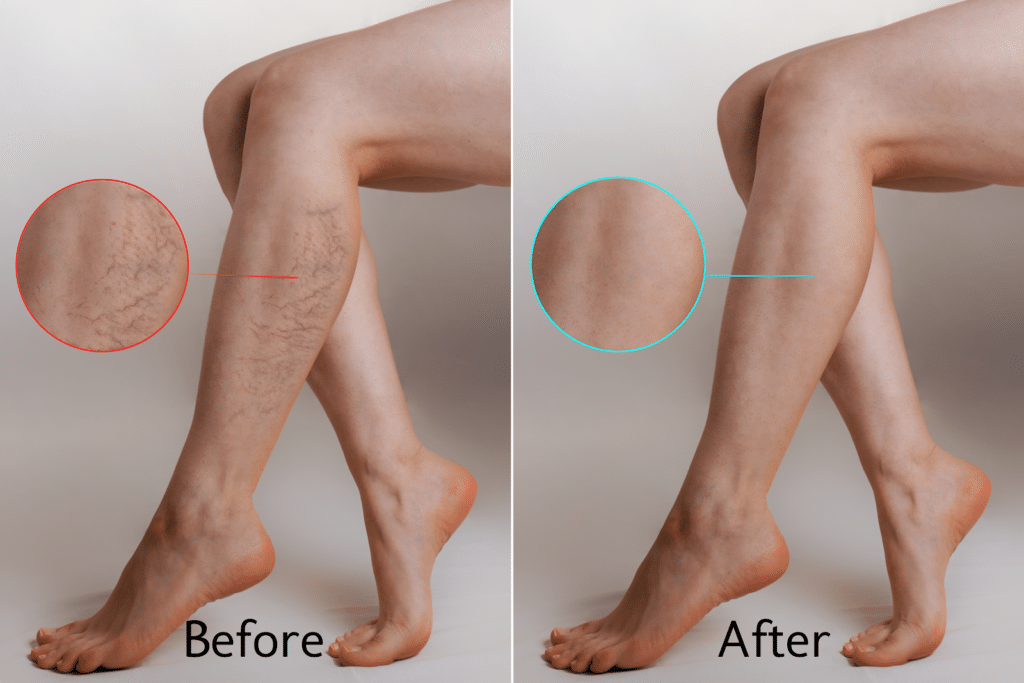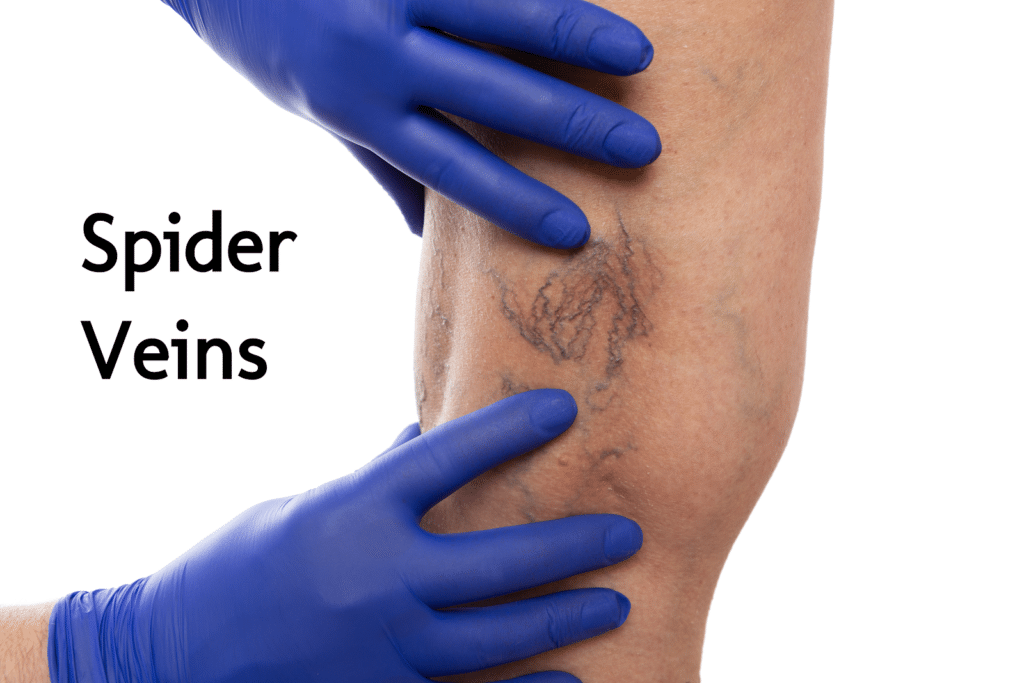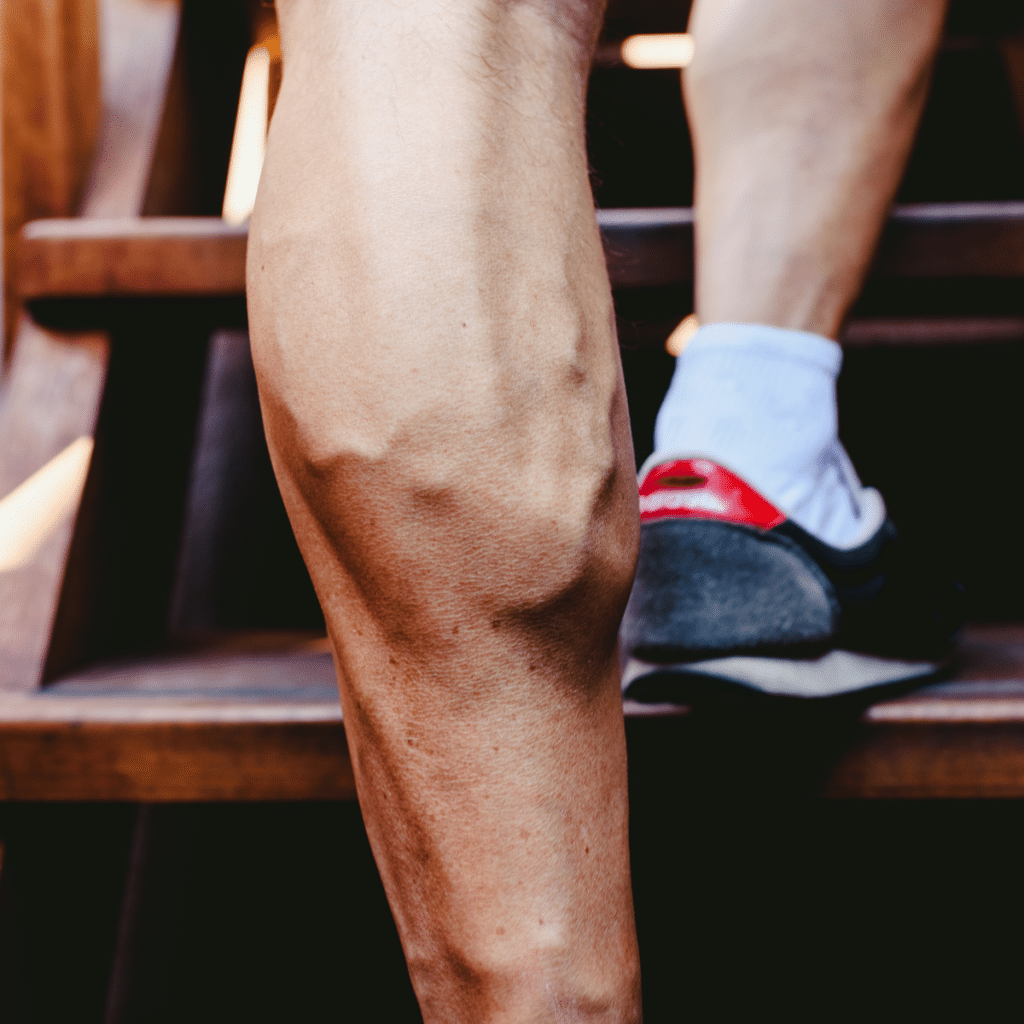Varicose and spider veins are usually painless, however over time they can become painful when they are under pressure or become inflammed. While the bulging nature of varicose veins and the red, blue, or purple coloring of spider veins may look painful, both conditions are typically painless early on, which is why many patients wait until the appearance is too much of a nuisance before they get treatment. Some people report feeling small aches or itchiness from time to time, but it’s often a cosmetic concerns that brings them into our office.
Veins affect so many primary systems within our body, so taking notice of changes and giving them serious attention is extremely important. While it’s often little more than a cosmetic issue when dealing with our veins, it’s always worth it to double-check with your doctor.
Start by taking Dr. Wright’s quick and easy vein health assessment to determine if you have a low, moderate, or high risk of vein disease.
Read on: Potential Causes Related to Venous Insufficiency
There are a variety of factors that are believed to be related to the development of venous insufficiency. Some physicians have noticed a link between patients who are overweight and those that smoke regularly. Alternatively, there are links between venous insufficiency and those patients who are simply genetically inclined to develop the condition and have a family history of venous insufficiency to go along with it. Other potential causes for this condition are pregnancy, jobs that require standing in one place for prolonged times, or a sedentary lifestyle.
Vein Disease & Genetics – It Might Run In The Family
Genetics influence the likelihood of having varicose veins. If your parents have them, you might, too. Around 20% of men worldwide and 30% of women reportedly have varicose and/or spider veins in one or more areas of their body, most commonly the legs, arms, or hands. These instances increase with age as skin becomes less elastic and collagen production decreases, so nearly 50% of both men and women reportedly experience varicose or spider veins by the time they are 60 years old.
Vein Disease from Pregnancy and Childbirth

Some women develop spider veins in their face as well as other areas of their body during and after pregnancy when their estrogen hormone levels increase, leading to broken blood vessels. Since the body produces more estrogen during pregnancy, women may suffer vein weakness, blood flow is also increased, and the veins may become enlarged.
Vein Disease Treatment Options

Broken veins in the skin, in the absence of ultrasound evidence of major varicose veins or venous insufficiency, can be treated on an outpatient basis using treatments like sclerotherapy, endovenous laser treatment, or radiofrequency ablation.
Our veins work to move blood through our body and then return it back to our heart. And throughout our body, we actually have more than enough veins for them to work efficiently. In fact, we have so many that we can treat and remove any unsightly veins without disrupting the process of returning blood to our hearts. By the time treatment is complete and the ineffective veins are closed, their function has already been taken over by our body’s health veins!
Chronic venous disease presents in a variety of stages in patients and therefore, requires a treatment plan that is customized to the individual. While in the past it was often assumed that highly invasive treatment techniques such as vein stripping were the only way to successfully handle chronic venous disease, today, advancements in the field of medicine and cosmetic treatment options provide patients with a wide variety of minimally-invasive choices. These outpatient treatment options eliminate the need for lengthy surgeries that are accompanied by plenty of risks associated with the use of general anesthesia. Instead, patients find they have the option of utilizing local anesthetic and enjoying treatments that come with short and relatively painless recovery periods.
Those patients who are suffering from mild cases of chronic venous disease will likely find wearing compression garments regularly to be helpful. From socks to sleeves, these compression garments work to promote healthy blood flow in the extremities and when combined with lifestyle changes such as diet and exercise, can prove to be highly effective.
Those patients suffering from more severe cases of chronic venous disease may need to consider minimally invasive treatment options such as laser ablation or sclerotherapy. These treatments are often performed over a series of sessions and involve collapsing problematic veins using injections or laser-focused heat.
Sclerotherapy Vein Treatment for Spider Veins
Sclerotherapy vein treatment is a cosmetic vein treatment that is frequently requested by our patients. This treatment option is a quick and permanent way to address the culprit of your spider veins: the veins that had previously dilated and led to the burst. Dr. Wright injects your spider veins with a substance called a sclerosant. This chemical works by causing the dilation of your vein to diminish, and the vein will permanently shut and be naturally absorbed back into the body. Typically, our patients will receive multiple injections during their treatment for maximum results. Occasionally we will use a saline solution in place of the sclerosant with the same results and effectiveness.

Sclerotherapy is the most recommended treatment for veins due to its precise nature. Other forms of vein disease, such as varicose veins, involve the bodies of larger veins. It is much easier to find these veins and treat them effectively, but spider veins are significantly smaller! Because of their tiny and thin size (sometimes these veins are as small as a needle tip!) it can be difficult for other forms of treatment. Sclerotherapy is also a minimally invasive procedure that is safe on the body and does not require any significant recovery time. In fact, most patients are able to get up and leave right after their procedure is over. Some patients may experience mild side effects such as an allergic reaction or inflammation after the procedure is completed, but these side effects typically fade within a few days.
Endovenous Laser Treatment for Varicose Veins
One of our most popular and common vein treatments is endovenous laser treatment. This type of procedure maps out your veins with ultrasound mapping to find the root of the problem. The problem vein (known as the saphenous vein) is then removed. Older treatments required vein stripping that physically removed the vein from the body. However, endovenous laser treatment uses state-of-the-art technology to safely shut down these problem veins. Specifically, Dr. Wright uses a small fiber that’s inserted into the damaged vein and directs laser energy at it. This causes the vein to permanently collapse and then be reabsorbed back into the body.

Endovenous laser treatment is a minimally invasive treatment meaning you will not have to go through lengthy recovery times. Local anesthesia makes sure you remain comfortable. Only a small incision is needed for the procedure and will heal quickly, and we use compression stockings to help accelerate the healing process.
Radiofrequency Ablation for Varicose Veins
Another option that works similar to endovenous laser treatment is called radiofrequency ablation. This procedure also uses a tiny probe and is inserted into the problem vein. Instead of laser energy, this procedure will direct radiofrequency energy to heat up the vein and cause it to collapse. This collapsed vein will also be safely absorbed into your body and blood flow will be naturally redirected. After the treatment is complete your treatment area will start to regain its previous appearance. Most individuals can head home right after the treatment is complete. The usual side effects include some swelling around the treated area but will heal quickly especially when compression stockings are worn. Most people return to full activities 48 hours later and the cosmetic results are excellent.
Have More Questions? We’re here to help!
Have more questions about your veins or possible treatment options? Perhaps the best part of getting vein treatment is how easy it is to start the process! It’s as simple as contacting St. Louis Laser Vein for an open appointment, discussing your ideal outcomes with Dr. Wright and our team, and getting the treatment scheduled! We’re here to help talk through what you’re looking for and how we can help you get those desired results to feel your best!
Contact St. Louis Laser Vein today to speak with Dr. Wright and his team of experts. He’s here to help answer your questions and concerns, and help you decide on what plan might work best

